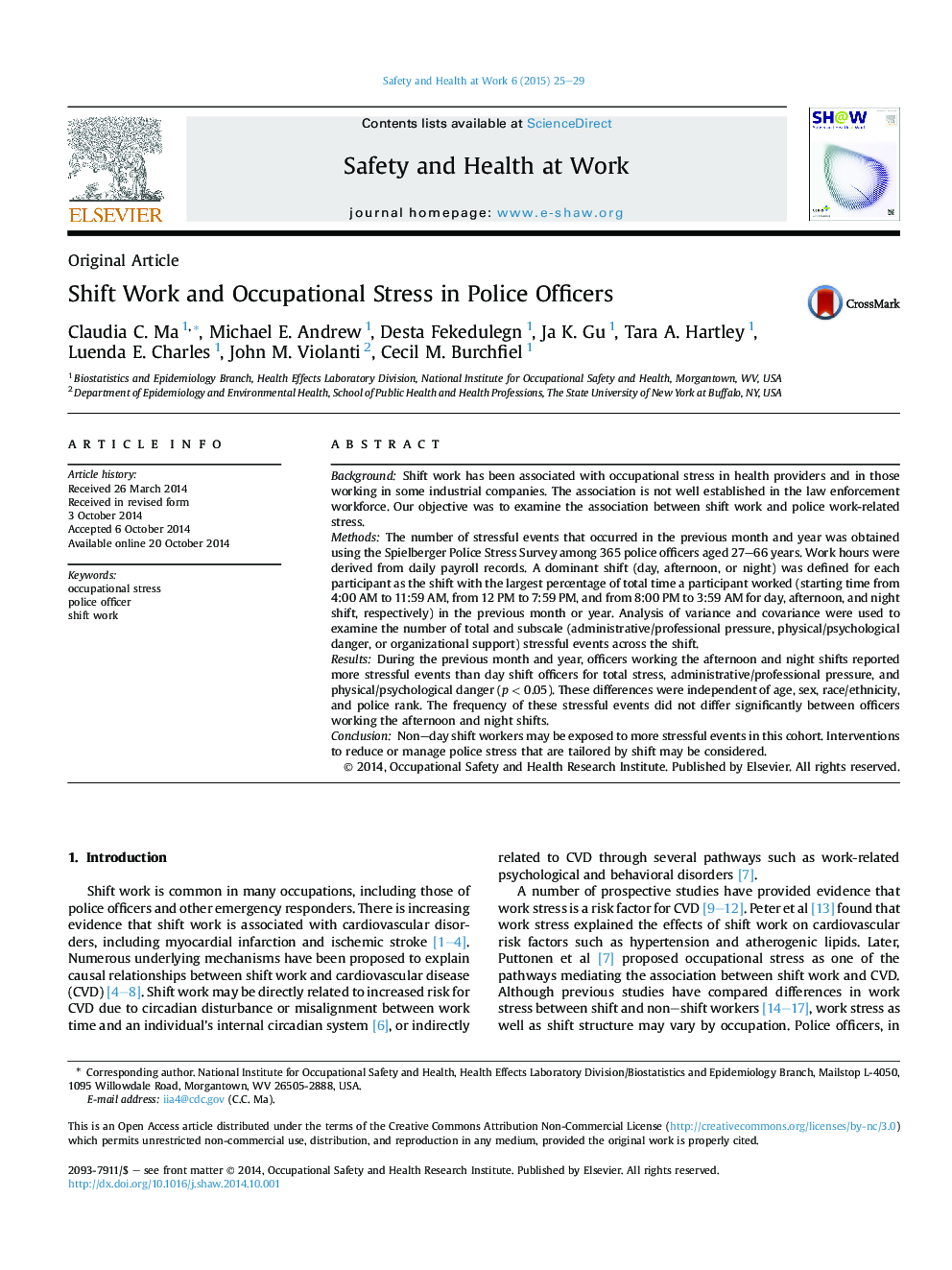| کد مقاله | کد نشریه | سال انتشار | مقاله انگلیسی | نسخه تمام متن |
|---|---|---|---|---|
| 1092002 | 952227 | 2015 | 5 صفحه PDF | دانلود رایگان |
کلمات کلیدی
1. مقدمه
2. اصول و روش ها
2.1. منبع داده ها
2.2. ارزیابی استرس پلیس
2.3. اطلاعات شیفت کاری
2.4. اطلاعات جمعیت شناسی
2.5. آنالیز اماری
3. نتایج
4. بحث
BackgroundShift work has been associated with occupational stress in health providers and in those working in some industrial companies. The association is not well established in the law enforcement workforce. Our objective was to examine the association between shift work and police work-related stress.MethodsThe number of stressful events that occurred in the previous month and year was obtained using the Spielberger Police Stress Survey among 365 police officers aged 27–66 years. Work hours were derived from daily payroll records. A dominant shift (day, afternoon, or night) was defined for each participant as the shift with the largest percentage of total time a participant worked (starting time from 4:00 AM to 11:59 AM, from 12 PM to 7:59 PM, and from 8:00 PM to 3:59 AM for day, afternoon, and night shift, respectively) in the previous month or year. Analysis of variance and covariance were used to examine the number of total and subscale (administrative/professional pressure, physical/psychological danger, or organizational support) stressful events across the shift.ResultsDuring the previous month and year, officers working the afternoon and night shifts reported more stressful events than day shift officers for total stress, administrative/professional pressure, and physical/psychological danger (p < 0.05). These differences were independent of age, sex, race/ethnicity, and police rank. The frequency of these stressful events did not differ significantly between officers working the afternoon and night shifts.ConclusionNon–day shift workers may be exposed to more stressful events in this cohort. Interventions to reduce or manage police stress that are tailored by shift may be considered.
Journal: Safety and Health at Work - Volume 6, Issue 1, March 2015, Pages 25–29
